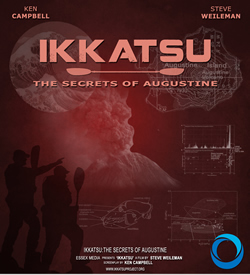A Green rush
W. T. Sayward was a Maine man who had made his fortune as a gold speculator  in San Francisco. He opened his steam mill on waterfront land in Port Ludlow and although it had significant operational difficulties for the first few years, it eventually became profitable. And very busy. The word was out, and it wasn’t long before you couldn’t swing a dead cat in western Washington without hitting a timber baron.
in San Francisco. He opened his steam mill on waterfront land in Port Ludlow and although it had significant operational difficulties for the first few years, it eventually became profitable. And very busy. The word was out, and it wasn’t long before you couldn’t swing a dead cat in western Washington without hitting a timber baron.
Where California had its gold rush, Washington endured a frenzy centered around the color green. Trees were cut, hauled from the woods by teams of oxen and dumped into the waters of the sound and Hood Canal. Rafts of logs were towed to the mills and cut into lumber, then shipped away. Resource extraction, plain and simple. With a little value added in some cases, when the raw logs were converted to building material but overall, a destructive and short-sighted process that harvested trees without thought of what it took to grow them and the environment in which they grew.
The methods have changed but the process is still much the same. Logging companies of today are  quite concerned that they be viewed as conservationists, caring for the land even as they wipe it clean. A great deal is made of their replanting programs, as if a flimsy seedling (that may well perish during its first winter), is the same as a 200 year-old fir or cedar. As if the damage that logging causes to streams and hillsides is not that imporant, and none of our business anyway. There is a pompous disregard for reality that every commercial logging outfit wears on its sleeve, seen clearly in the self-serving billboards by the sides of the roads that proclaim the virtues of timber management. “America’s forests are America’s future.” That’s one of my favorites.
quite concerned that they be viewed as conservationists, caring for the land even as they wipe it clean. A great deal is made of their replanting programs, as if a flimsy seedling (that may well perish during its first winter), is the same as a 200 year-old fir or cedar. As if the damage that logging causes to streams and hillsides is not that imporant, and none of our business anyway. There is a pompous disregard for reality that every commercial logging outfit wears on its sleeve, seen clearly in the self-serving billboards by the sides of the roads that proclaim the virtues of timber management. “America’s forests are America’s future.” That’s one of my favorites.
The reality is that if it were not for Olympic National Park, the entire peninsula would have been scoured clean by now. Where replanting has occurred, and taken root, all we are left with are monocultures of genetically enhanced fir, whole tracts of same-age trees with the biodiversity of garden planter boxes. You can call them forests if you like, but they are different and wholly distinct from the forests that John Muir saw when he visited the region, trees that seemed as though they were “were courting their fate, coming down from the mountains far and near to offer themselves to the axe.”
It took a long time to advance the notion that a forest is more than a collection of trees; it is a place where each living thing, every plant, animal and human, is inextricably linked to one another. America’s forests are not the future, they are America’s past, and we’re fortunate that some of that historical record has been preserved. At least for now.











